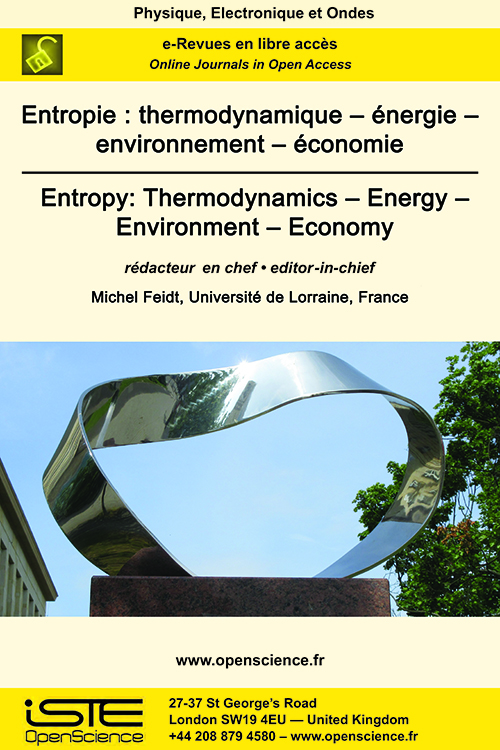

Physics > Home > Entropy: Thermodynamics – Energy – Environment – Economy > Issue
The objective of this work is to improve knowledge on the thermo-physical characterization of building walls by comparing three numerical methods on an experimental masonry brick wall. The approach consist in a parametric identification of the thermophysical properties of the considered wall (namely the thermal conductivity λ and the thermal capacity ρ.cp), by comparing and minimizing the difference between the results of the experimental tests and those resulting from the numerical model. The experimental device consists of a controlled atmosphere thermal box crossed by a thermostatic bath radiator placed on the side opposite the wall. The experimental wall is a solid brick wall (6 cm × 11 cm × 22 cm) with mortar joints with a total thickness of 34 cm. It constitutes one of the four lateral faces of the box. Three different methods were examined: the analytical method using the heat transfer matrix, the finite element method using COMSOL® multiphysics software, and the Air node zone model method using the Type 56 of the TRNSYS® software. The results obtained were satisfactory for λ (0.914, 0.935, and 0.884 W.m-1.K-1 and for ρ.cp (1091445, 1057100, and 1095500 J/(m3.K)) for the three investigated methods.
This paper looks at the models used in the studies of energy conversion systems performances. These models are defined in respect of whether or not internal or/and external irreversibility is present. There are four types: the reversible (Carnot), the endoreversible, the exoreversible and the irreversible. This collection presents the characteristics of each model and its possible applications. Particular attention is paid to the endoreversible model which, linked to the system’s hierarchical decomposition method, may well yield very satisfactory results in conceptual and operational studies with easy computation. The irreversible model is always an approached model since not all irreversibility can be modeled in the same formulation; this has forced researchers to provide empirical relationships for this type of model. This collection, along with the examples covered, will be a basis for researchers in which they can have grouped ideas on models for investigating the performance of energy and environmental systems.
Bio-printing from additive manufacturing technologies is developing in terms of scientific research because with this recent technology it would be possible, with stem cells from people with serious diseases, to one day recreate deficient organs without rejection from sick patients since these organs would be recreated from compatible healthy cells. What is observed is an almost exponential increase in the volume of experimental publications, while the modelling of cell growth and differentiation processes remains little explored. Nevertheless, bio-printing requires the convergence of many scientific disciplines, which imposes an epistemological reflection aimed at robust organ production. In the absence of the possibility of a deep association between the scientific specialists concerned, mathematical modelling makes it possible to attempt to find possible paths existing between the extraction of healthy cells from a patient and the potential production of a tissue, or even an organ. The aim of this work is to illustrate this potentiality, making it possible to know what questions to ask biologists in order to make progress on this subject (in particular), but also to know the limits of this type of exercise.

2024
Volume 24- 5
Special issue LILA 22023
Volume 23- 4
Issue 12022
Volume 22- 3
Issue 12021
Volume 21- 2
Special issue2020
Volume 20- 1
Issue 1